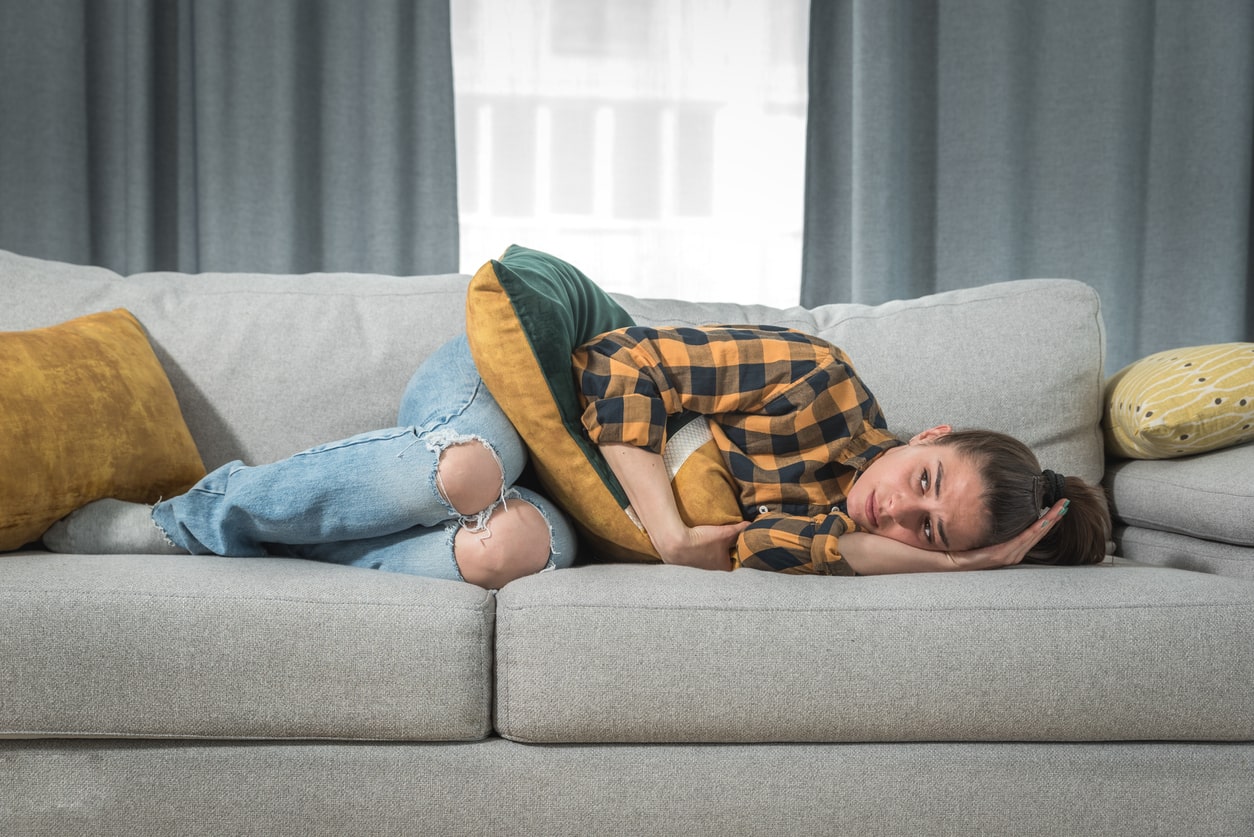Endometriosis can significantly impact daily life, particularly during ovulation. While ovulation pain is common for many women, endometriosis often produces heightened discomfort and crampy pelvic pain. The following unpacks the nature of this pain, its symptoms, and provides many effective coping strategies.
Table of contents
What Does Ovulation Pain Feel Like?
Ovulation pain, also known as “mittelschmerz”, typically manifests as a sharp or cramping sensation in the lower abdomen. For those with endometriosis, this pain can be more intense and prolonged. Understanding the nature of this pain helps in identifying and managing it effectively. The sensation may vary from mild twinges to severe cramping, often localized to one side of the pelvis, or the other, depending on which ovary is releasing an egg (Hudson, 2016).
Symptoms and Duration of Ovulation Pain: How Long Does it Last?
Cramping during ovulation can vary from mild to severe, often accompanied by other symptoms such as nausea, bloating, and fatigue. The duration of ovulation pain can range from a few minutes to several hours, and in some cases, it may last for one or two days. Identifying these symptoms early can aid in better pain management. Women with endometriosis may also experience simultaneous back pain, headaches, and gastrointestinal issues during this period (Kosia et al., 2021). Tracking the duration and intensity of the pain can provide valuable insights for medical consultations. Keeping a pain diary can help in understanding patterns and triggers, which is essential for effective management (Taylor, 1995).
Mittelschmerz Symptoms
Mittelschmerz, the German term for “middle pain,” refers to ovulation pain occurring midway through the menstrual cycle. Symptoms include localized abdominal pain, often on one side, and can be accompanied by light vaginal bleeding or discharge. Women with endometriosis may experience exaggerated mittelschmerz symptoms, requiring more intensive management. Symptoms may also include sharp, intermittent pain that can sometimes radiate to the thighs and lower back (Pearlin & Schooler, 1978).
Nausea During Ovulation
Nausea is a much less commonly discussed symptom of ovulation, but it can occur, especially in women with endometriosis. Hormonal fluctuations and pain can contribute to feelings of nausea, impacting daily activities. Anti-nausea medications and dietary adjustments may be beneficial in managing this symptom (Mitchell et al., 2011).
Coping Strategies for Endometriosis and Ovulation Pain
- Pain Management: Over-the-counter pain relievers can be effective. For severe pain, you may need stronger medications or hormonal treatments. Nonsteroidal anti-inflammatory drugs (NSAIDs), like ibuprofen, are often recommended for their efficacy in reducing inflammation and pain (Ostell, 1991). However, the types of NSAIDs can also make a difference. So review your NSAID pain options and select accordingly.
- Heat Therapy: Applying a heating pad to the lower abdomen can help relax muscles and reduce pain. Heat therapy is a simple yet effective method to alleviate cramping and discomfort. Be careful not to burn skin by interposing something, like a towel, between the heat pad source and the skin.
- Red Light Therapy: Red light therapy involves the use of low-level wavelengths of light to penetrate the skin and promote cellular function. This therapy can help reduce inflammation and pain associated with endometriosis and ovulation (Adamenko, 2020).
- TENS Units: Transcutaneous Electrical Nerve Stimulation (TENS) units deliver small electrical impulses to the affected area, helping to block pain signals and promote the release of endorphins, which are natural pain relievers. TENS units can be particularly useful for managing chronic pain conditions like endometriosis (Putri & Kushartati, 2015).
- Diet and Exercise: Maintaining a balanced diet and regular exercise routine can help manage symptoms. Foods rich in anti-inflammatory properties, such as leafy greens and fish, may alleviate pain. Regular physical activity can improve overall well-being and reduce the severity of symptoms (Kremer & Quednau, 2002).
- Stress Reduction: Techniques such as yoga, meditation, and deep-breathing exercises can help reduce stress, which in turn can lessen pain intensity. Mindfulness practices have shown promise in managing chronic pain and improving quality of life.
- Holistic and Integrative Approaches:
- Herbals/Botanicals:
- Turmeric: Known for its anti-inflammatory properties, turmeric can help reduce pain and inflammation.
- Ginger: Another anti-inflammatory herb, ginger can help alleviate pain and nausea.
- Vitex (Chaste Tree Berry): Often used for hormonal balance, it can help reduce symptoms of endometriosis (Kosia et al., 2021).
- Aromatherapy:
- Lavender: Known for its calming properties, lavender oil can help reduce stress and pain.
- Peppermint: Can help alleviate nausea and headaches.
- Clary Sage: May help balance hormones and reduce menstrual pain (Mitchell et al., 2011).
- Acupuncture: This traditional Chinese medicine practice involves inserting thin needles into specific points on the body to relieve pain and promote healing. Acupuncture can help reduce the severity of ovulation pain and improve overall well-being (Davies, 1993).
- Herbals/Botanicals:
- Medical & Surgical Interventions: To get an accurate diagnosis, get to the root cause and treat endo-associated ovulatory pain, minimally invasive surgical options may be considered to excise endometriosis tissue and provide relief, which is often rapid. Hormonal therapies, such as birth control pills, gonadotropin-releasing hormone (GnRH) agonists, and progestin therapy, can help manage symptoms by regulating or halting menstruation but an produce many symptoms as side effects, some of which can be long-lasting. The most prudent course of action is to consult and be under the care of an endometriosis specialist.
Updated Post: July 09, 2024




